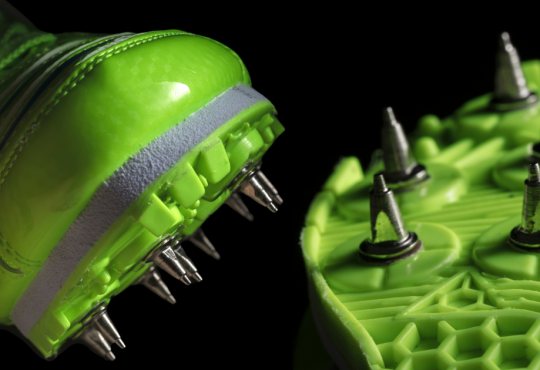Cardiovascular health is vital for overall well-being. Cardio exercises improve heart and lung efficiency, increase oxygen flow to muscles, enhance endurance, and burn calories. They also help reduce stress, improve mental clarity, and prevent chronic diseases like heart disease and diabetes. This comprehensive guide explores exercises that boost cardio, explains the science behind cardiovascular fitness, and provides practical tips for incorporating these exercises into your routine.

Why Cardiovascular Fitness is Crucial
Cardiovascular fitness refers to the ability of the heart, lungs, and circulatory system to efficiently supply oxygen to working muscles during prolonged physical activity. Whether you’re aiming for weight loss, improved endurance, or simply better overall health, focusing on cardiovascular fitness is a key component of any exercise program. Here are some reasons why it’s crucial:
1. Heart Health
Cardio exercises improve the strength and efficiency of the heart. A stronger heart pumps blood more effectively, reducing the strain on the cardiovascular system and lowering the risk of heart disease, stroke, and hypertension. Over time, regular cardiovascular workouts help reduce LDL cholesterol (bad cholesterol) and raise HDL cholesterol (good cholesterol), promoting healthy arteries.
2. Lung Capacity
When you perform cardio exercises, your lungs work harder to provide oxygen to your muscles. Over time, your lung capacity increases, and your body becomes more efficient at using oxygen. This improved efficiency translates into better endurance, allowing you to sustain physical activities for longer periods without fatigue.
3. Weight Loss and Calorie Burn
Cardio exercises are excellent for burning calories and shedding excess weight. The amount of calories burned depends on the intensity and duration of the exercise. High-intensity exercises such as running, cycling, and swimming can burn anywhere from 300 to 700 calories per hour, making them effective for weight management and fat loss.
4. Mental Health Benefits
Exercise has a profound effect on mental health, particularly aerobic exercise. Engaging in regular cardio workouts boosts the release of endorphins, which are the body’s natural mood elevators. This reduces stress, anxiety, and depression. Additionally, cardio exercises can improve cognitive function and promote better sleep.
5. Blood Circulation and Oxygen Delivery
As you perform cardio exercises, your blood circulation improves, which in turn enhances the delivery of oxygen and nutrients to your muscles and tissues. This helps with tissue repair, improves skin health, and ensures that your body can recover more quickly after workouts.
Now that we understand the importance of cardiovascular health, let’s dive into the top exercises that boost cardio and how to incorporate them into your fitness routine.
Top Exercises That Boost Cardio
There are numerous ways to boost cardio, from high-intensity interval training (HIIT) to low-impact exercises like swimming. Depending on your fitness level, goals, and preferences, you can choose from a variety of cardio exercises. Below are some of the most effective options:
1. Running
Running is a simple yet highly effective way to boost cardio. It doesn’t require any equipment (other than a good pair of running shoes), and you can do it virtually anywhere, whether outside in a park, on a treadmill, or on a track. Running challenges the heart, lungs, and muscles, making it one of the best exercises for improving cardiovascular endurance.
- Benefits: Running improves heart health, increases lung capacity, strengthens muscles, and burns significant calories.
- Calories Burned: Depending on your pace and weight, running can burn between 300 to 600 calories per hour.
- Mental Benefits: Running, especially long-distance, has been shown to reduce symptoms of anxiety and depression. Many runners experience a “runner’s high,” a euphoric feeling triggered by the release of endorphins.
Tips for Beginners:
- Start with short distances and a comfortable pace. Gradually increase your speed and distance over time.
- Use interval training (alternating between jogging and sprinting) to boost cardio fitness and burn more calories.
- Ensure you have proper footwear to prevent injury, and aim for 3 to 5 running sessions per week.
2. Cycling
Cycling is another fantastic cardio workout that can be done indoors on a stationary bike or outdoors on a road bike. It is lower-impact than running, making it a suitable option for those with joint issues or who are looking for a gentler form of cardio. Cycling targets the lower body, especially the quadriceps, hamstrings, and calves.
- Benefits: Low-impact, strengthens legs, improves cardiovascular fitness, and burns calories.
- Calories Burned: Moderate cycling can burn between 400 to 600 calories per hour, depending on speed and intensity.
- Joint-Friendly: Since cycling is low-impact, it’s ideal for individuals with knee or hip problems.
Cycling Tips:
- Start with moderate-intensity rides, focusing on maintaining a consistent cadence (pedaling rate).
- Incorporate hill climbs and sprints into your rides to elevate your heart rate and boost cardio fitness.
- If you’re cycling outdoors, wear appropriate safety gear, including a helmet.
3. Swimming
Swimming is a full-body workout that boosts cardio and strengthens muscles simultaneously. It’s also one of the most joint-friendly exercises, making it ideal for people with arthritis, injuries, or joint pain. Swimming works various muscle groups, including your core, back, arms, and legs, while also improving flexibility.
- Benefits: Full-body workout, improves flexibility, increases lung capacity, and burns calories.
- Calories Burned: Swimming can burn 400 to 600 calories per hour, depending on the stroke and intensity.
- Low-Impact: The water’s buoyancy reduces the impact on joints, making swimming a safe and effective exercise for individuals recovering from injury.
Swimming Tips:
- Focus on proper technique and rhythmic breathing to maximize your efficiency in the water.
- Start with basic strokes like freestyle or breaststroke and gradually increase the duration and intensity of your swim sessions.
- Swim for 30 to 45 minutes, at least three times a week, to see significant cardiovascular improvements.
4. Jump Rope
Jumping rope is one of the simplest and most effective cardio exercises that boost cardiovascular endurance. It’s a high-intensity workout that can be done anywhere, and it’s also very affordable—requiring only a jump rope. It works your entire body, including the legs, core, and arms, while rapidly elevating your heart rate.
- Benefits: Increases coordination, strengthens legs, improves cardiovascular fitness, and burns calories quickly.
- Calories Burned: Jumping rope can burn up to 700 calories per hour.
- Portable and Convenient: You can carry a jump rope with you anywhere, making it a great travel workout.
Jump Rope Tips:
- Start with short intervals of 1 to 2 minutes, then rest and repeat. Gradually increase your jumping time as you build endurance.
- Mix in different styles like high knees or double-unders to challenge your coordination and boost cardio intensity.
- Aim for 15 to 20 minutes of jump rope in your workout routine, with intervals for added intensity.
5. Rowing
Rowing is another excellent exercise that boosts cardio while engaging both the upper and lower body. Whether you use a rowing machine at the gym or row on the water, this workout is a great way to build endurance, strength, and cardiovascular fitness. It works muscles in your arms, shoulders, back, legs, and core, making it a full-body exercise.
- Benefits: Full-body workout, low-impact, improves cardiovascular endurance, and strengthens muscles.
- Calories Burned: Rowing can burn up to 600 calories per hour, depending on the intensity and duration.
- Joint-Friendly: Rowing is a low-impact exercise that puts minimal strain on the joints, making it suitable for people with joint issues.
Rowing Tips:
- Focus on maintaining proper form, with strong leg pushes and powerful strokes, to maximize your workout.
- Start with 20-minute rowing sessions and gradually increase your time as your endurance improves.
- Incorporate interval training into your rowing routine, alternating between high-intensity sprints and lower-intensity recovery strokes.
6. HIIT (High-Intensity Interval Training)
HIIT is a popular form of cardio exercise that alternates between short bursts of intense activity and periods of rest or low-intensity exercise. It’s one of the most efficient ways to boost cardio, burn calories, and improve metabolic function. HIIT workouts can include exercises like sprints, burpees, mountain climbers, and jumping jacks.
- Benefits: Maximizes calorie burn in a short amount of time, improves cardiovascular and anaerobic endurance, and increases metabolism.
- Calories Burned: HIIT workouts can burn 400 to 600 calories per hour, with the added benefit of post-exercise calorie burn (EPOC).
- Time-Efficient: HIIT workouts can be done in as little as 20 minutes, making them ideal for people with busy schedules.
HIIT Tips:
- Start with a 20-minute session, alternating between 30 seconds of high-intensity effort and 30 seconds of rest.
- Gradually increase the intensity and duration of your high-intensity intervals as your fitness improves.
- Perform HIIT workouts 2 to 3 times per week to boost cardio and build endurance.
7. Dancing
Dancing is a fun and dynamic way to boost cardio. It’s a great option for people who enjoy moving to music and want a cardio workout that doesn’t feel like exercise. Whether you choose Zumba, salsa, hip-hop, or even ballroom dancing, dancing can improve coordination, balance, and cardiovascular fitness.
- Benefits: Full-body workout, improves coordination, enhances mood, and boosts cardiovascular endurance.
- Calories Burned: Depending on the style and intensity, dancing can burn 300 to 500 calories per hour.
- Social and Fun: Dancing is a fun and engaging way to work out, especially if you attend classes with friends or a group.
Dancing Tips:
- Sign up for a dance class that interests you or follow online dance workouts at home.
- Dance for at least 30 to 45 minutes per session, aiming for 3 to 4 sessions per week.
- Incorporate different styles of dance to keep your workouts fresh and exciting.
The Science Behind Exercises That Boost Cardio
Understanding how exercises that boost cardio work involves examining the cardiovascular system. Cardio workouts challenge the heart, lungs, and circulatory system to meet the increased oxygen demand of working muscles. This causes your heart rate to rise and your lungs to work harder to supply oxygen to the bloodstream.
How Cardio Improves VO2 Max
VO2 max is a measure of your body’s ability to utilize oxygen during exercise. It represents the maximum volume of oxygen that can be delivered to your muscles per minute. The higher your VO2 max, the better your cardiovascular fitness.
Cardio exercises that increase VO2 max include high-intensity activities like running, cycling, and swimming. Over time, as you engage in these activities, your heart and lungs become more efficient at oxygenating your blood and delivering it to your muscles, improving your endurance and ability to perform aerobic tasks.
Aerobic vs. Anaerobic Cardio
Cardio exercises are typically divided into two categories:
- Aerobic Exercise: Aerobic activities, like jogging or cycling, rely on oxygen to fuel the muscles. These exercises are performed at moderate intensity for extended periods, improving cardiovascular endurance.
- Anaerobic Exercise: Anaerobic exercises, such as sprinting or HIIT, rely on stored energy sources rather than oxygen and are performed at high intensity for short durations. These exercises boost cardiovascular capacity and improve the body’s ability to recover quickly.
Both types of exercise play a role in boosting cardiovascular health and should be incorporated into your fitness routine for a well-rounded workout regimen.
How to Build a Cardio Routine
To get the most out of your cardio workouts, it’s essential to build a structured routine that challenges your heart and lungs while allowing for recovery. Here’s how to get started:
- Set Clear Goals: Whether you want to lose weight, improve endurance, or boost heart health, establish clear fitness goals to guide your workout plan.
- Choose Activities You Enjoy: Consistency is key to improving cardio fitness. Select exercises that you enjoy, whether it’s running, swimming, cycling, or dancing, to ensure you stick with your routine.
- Start Slow and Build Gradually: Begin with moderate-intensity exercises and gradually increase the intensity and duration as your fitness improves. This approach prevents burnout and reduces the risk of injury.
- Mix It Up: Incorporate a variety of cardio exercises into your routine to target different muscle groups and prevent boredom.
- Rest and Recover: Allow your body time to recover between cardio sessions, especially after high-intensity workouts like HIIT or sprinting.
Cardio exercises are a vital component of any fitness routine. They not only improve heart and lung health but also burn calories, boost mental well-being, and enhance endurance. Whether you choose to run, cycle, swim, or dance, finding exercises that boost cardio is key to maintaining a healthy, active lifestyle.
Remember, the most important factor is consistency. By regularly incorporating these exercises into your routine, you’ll reap the long-term benefits of improved cardiovascular health, mental clarity, and enhanced physical performance. Start today, and enjoy the journey towards better health and fitness through exercises that boost cardio!





